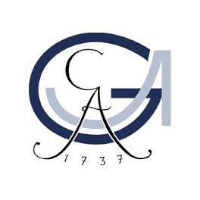
18 Mar Postdocs and PhD Students
Bachelor’s and master’s theses
If you are interested in doing your bachelor’s or master’s thesis research in our lab, please read the instructions on our teaching page.
Prospective PhD students and postdocs
We’re currently actively recruiting! We’re looking for postdocs in particular. Applications for PhD students are also welcome!
If you are interested in joining our lab, please email Alexander Ecker.
When applying, please make sure of the following:
- Tell us why you are interested in joining our lab specifically and what you would like to work on.
- Provide the names and email addresses of one or two people who would be willing to provide a reference letter for you.
- Don’t forget to attach a CV.
Current job openings
Data-driven multi-modal discovery of cell types in the neocortex
Understanding the relationship between structure and function of cortical neurons and circuits is one of the key challenges in neuroscience. In this project, we develop deep learning methods for data-driven identification of excitatory cell types in the visual cortex and to understand how a neuron’s morphology relates to its function. We will harness a unique large-scale functional anatomy dataset: a combination of electron-microscopy reconstructions at sub-micrometer resolution with two-photon functional imaging of nearly all excitatory neurons in one cubic millimeter of the mouse visual cortex.
Role: Postdoc (preferred) or PhD student
Your profile: Background in systems / computational neuroscience or machine learning (deep learning in particular). Experience with both is a strong plus, but not a requirement.
This project is funded by the European Research Council through an ERC Starting Grant and in tight collaboration with Andreas Tolias’ lab at Baylor College of Medicine, Houston, TX, USA. Regular visits at our collaborator’s lab in Houston are possible/encouraged.
Action Capture Platform: Deep learning for movement analysis and action classification
Studying social interactions and the underlying cognitive processes in humans and nonhuman primates requires observing and quantifying their behaviour, including body and head orientation, both in interactive lab settings and in the wild. The long-term goal of this project is to develop methods for automated, video-based recognition, motion tracking, and pose estimation of individual nonhuman primates as well as recognition of action types and inter-agent interactions in groups of primates freely moving primaates. We strive for generalisation across a range of primate species and varying real-world environmental conditions without the need to acquire detailed keypoint annotations in every context. The automated behavioural analysis tools developed in this project constitute a key enabling technology for a Collaborative Research Center focused on studying the Cognition of Interaction.
Role: Postdoc (preferred) or PhD student
Your profile: Strong background in machine learning (deep learning in particular) and/or computer vision. Experience with congitive science is a strong plus, but not a requirement.
This project is funded by the German Research Foundation (DFG) as part of Collaborative Research Center SFB 1528 – Cognition of Interaction and in collaboration with several groups at the German Primate Center: Julia Ostner, Claudia Fichtel, Julia Fischer
Holography reconstruction using deep learning
Digital in-line holography is a very powerful method to investigate particles in turbulent fluid flows such as atmospheric clouds, aerosols, etc. using the diffraction patterns of the particles illuminated by coherent light. Currently, wider use of the technique is held back both by a data processing bottleneck and the degradation in hologram quality in field measurements compared to laboratory experiments due to the physical environment. In this project, we will train machine learning algorithms to reconstruct holograms using a combination of real holograms from the lab and the field and simulated datasets. We will start with simple idealized Lorenz-Mie theory, but later extend to full wave-equation calculations including non-flat and non-Gaussian beams, realistic defects in the optical components, dirty optics, camera micro-lens arrays, pixel cross-talk and digitization errors, non-spherical particles including ice crystals, aggregate particles with different indices of refraction, non-perfect collimation, non-perfect alignment, spatial variation in the index of refraction of the air in the view volume due to temperature gradients, multi-scattering from multiple particles, etc.
Role: Postdoc (preferred) or PhD student
Your profile: Strong background in physics. Experience with machine learning (deep learning in particular) and computer vision is a strong plus, but not a requirement.
This project is in collaboration with the lab of Eberhard Bodenschatz and funded by the Max Planck Institute for Dynamics and Self-Organization.
Please click here to learn more


Sorry, the comment form is closed at this time.